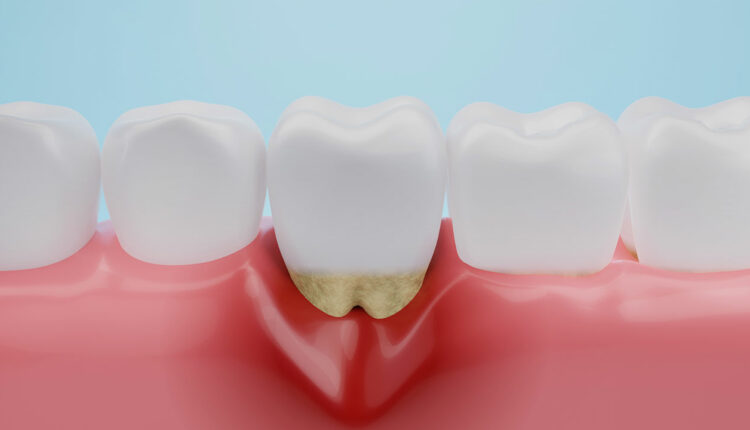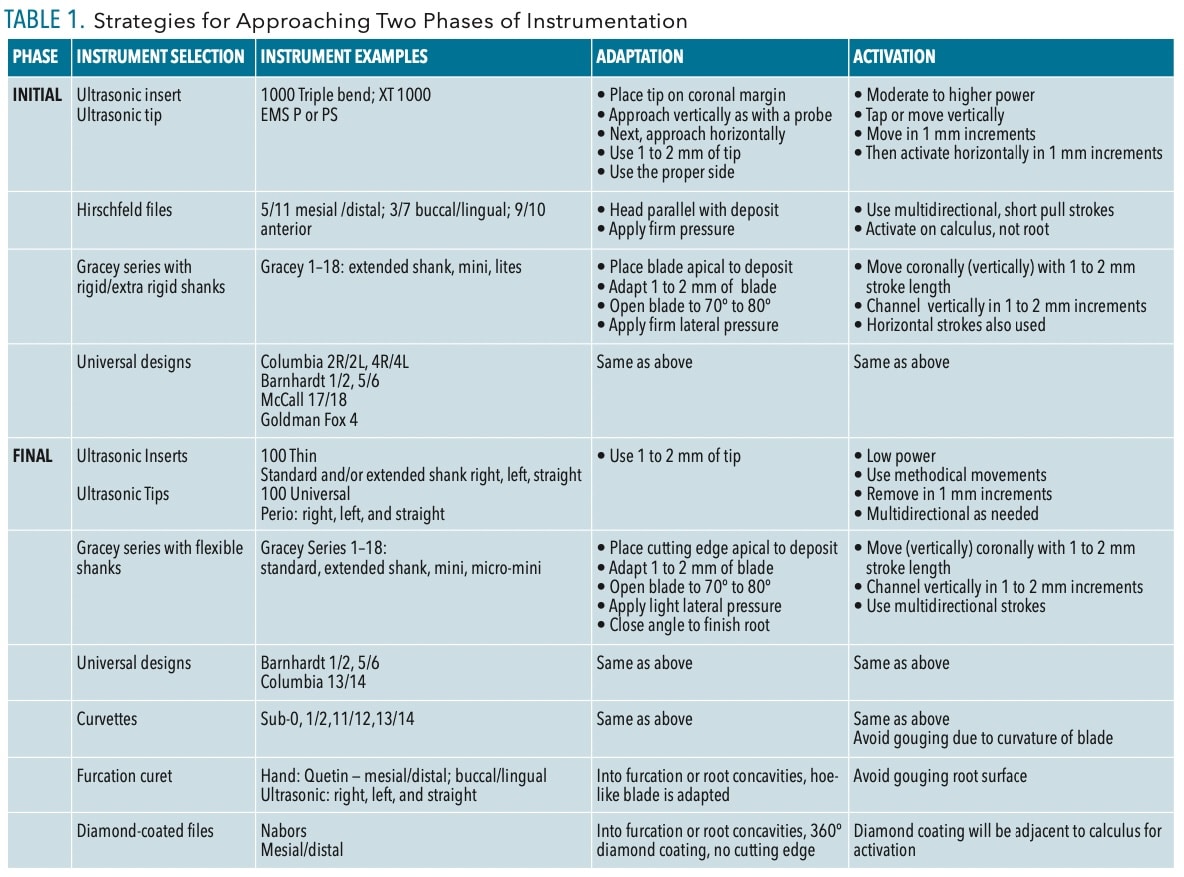
Precision Instrument Selection for Effective Burnished Calculus Removal
Learn how to choose the right dental instruments and techniques for successful removal of stubborn burnished calculus deposits in various pocket depths and shapes.
Instrument selection is key to the effective removal of burnished calculus. Initial instrumentation is critical as the start of the process determines the outcome of calculus removal (Table 1).
Explorers are needed to detect calculus and evaluate instrumentation. Consider the extended shank 11/12, standard 11/12, 3A, or a 2 with a long working end and shank. An explorer is important because rigid curets and files do not have the same tactile properties as instruments with flexible shanks, such as an explorer.
Initially, files are ideal to fracture tenacious calculus deposits. Hirschfeld files, while small, are sturdy with rigid shanks. Because of the flat and round working end, Hirschfeld files adapt well to all surfaces and deposits in shallow or deep pocket depth. Orban files might also be useful if the gingiva is inflamed and elastic.1,2 A tanged file is used to sharpen files.
Ultrasonic instrumentation is an option provided the correct tip design and technique are employed. Tips should have wide shanks, be round, have edges or bends, and be indicated for use on higher power. Tip designs that are thin and fine will not adapt well or promote enough power to fracture deposits.3
Second, sharp instruments with rigid or extra rigid shanks are needed due to the tenacity of deposits. Examples include Gracey instruments with rigid or extra rigid shanks, and universal curets with moderate or rigid shanks and long working ends (Table 1). Gracey instruments with standard shanks will be too flexible to remove this type of calculus.

When selecting instruments, consider deposit size, deposit location, and pocket shape. Also, root anatomy is critical to evaluate. Burnished calculus can be large, moderate, or fine and can be located in shallow (4 or 5 mm) or deep pocket depth (more than 6 mm) within wide or narrow pockets (Figure 1).
Choosing the length of an instrument’s shank is determined by the pocket depth: extended shanks are for depths greater than 5 mm. The shape of the pocket is critical when evaluating the blade width and length. A narrow pocket needs a Gracey extended shank mini or micro mini, or lites for effective treatment. Also, narrow pockets on the palate of the maxilla justify short and thin blades. Wide pockets are instrumented with rigid Graceys with longer and wider working ends as well as universal designs.
References
- Hodges KO. Using files in periodontal therapy. Dimensions of Dental Hygiene.
- Pattison AM. Tips on technique: using periodontal files. Dimensions of Dental Hygiene.
- Hodges KO. Negotiating deep pockets with ultrasonics. Dimensions of Dental Hygiene. 2019;17(1):16–21.
This information originally appeared in Hodges KO. Removing burnished calculus. Dimensions of Dental Hygiene. 2023;21(8):18-21.



